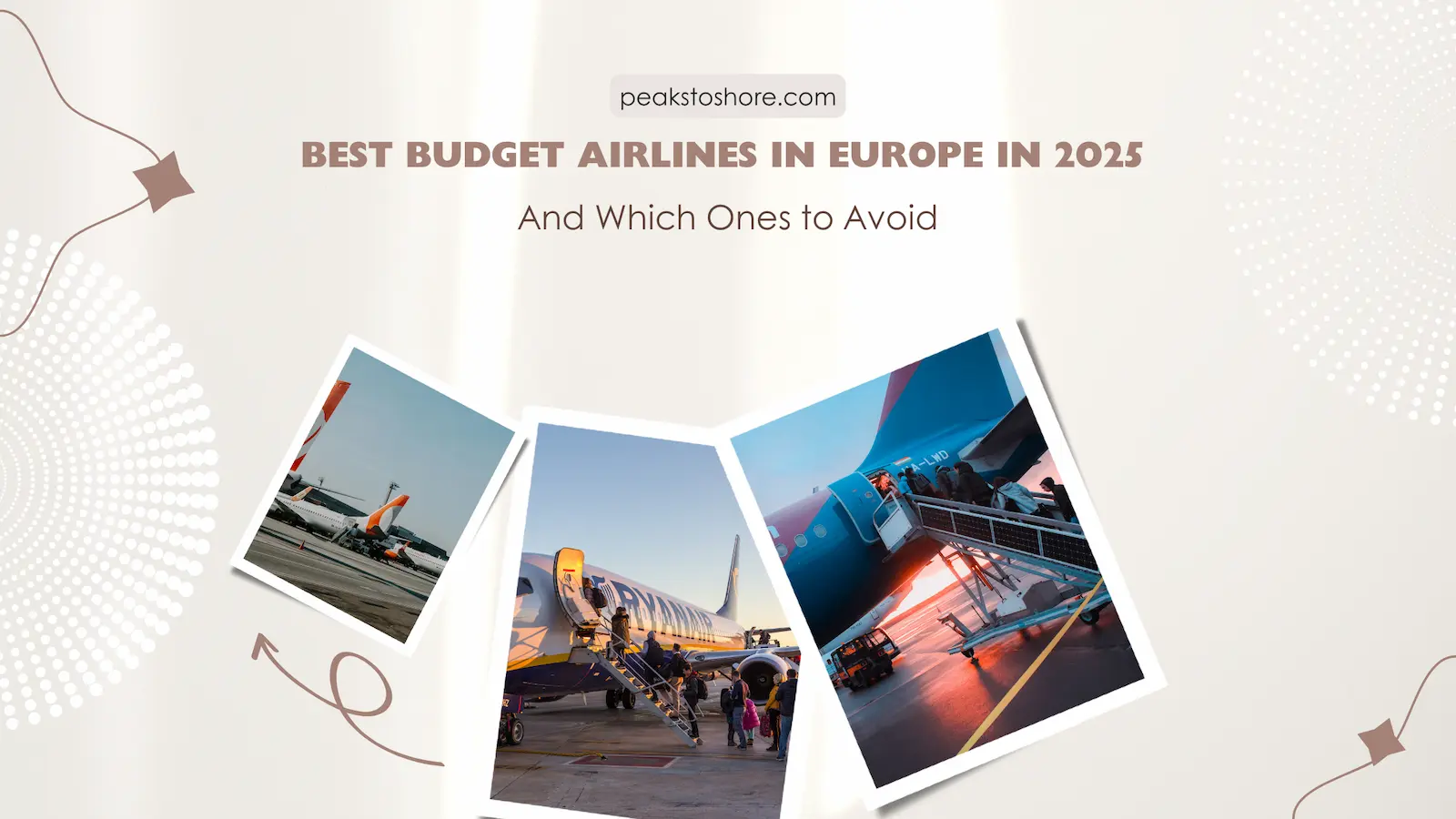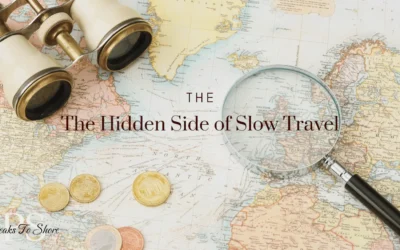Budget airlines have reshaped how people travel across Europe. With dozens of carriers offering ultra-low fares and hundreds of destinations, the continent has never been more accessible. Yet, beneath the surface of competitive pricing and bold advertising, the experience with budget carriers varies widely.
In 2025, travelers still ask: Which budget airline gives the best value? Which ones should you think twice about? This guide explores Europe’s most popular low-cost airlines—evaluating routes, convenience, comfort, reliability, and hidden costs—to help you make informed travel choices. Whether you’re hopping from Copenhagen to Barcelona or exploring Eastern Europe, understanding what each airline offers (and omits) can make or break your travel plans.
Top Budget Airlines in Europe in 2025 (In Review)
🛫 Ryanair: Broad Network, Strict Policies
Overview:
Ryanair remains one of Europe’s largest and most widely used budget carriers, operating across over 40 countries with an extensive route map.
What It Does Well:
- Massive network coverage, including major and regional cities.
- Frequent promotions and off-season deals.
- Generally reliable punctuality.
What to Watch Out For:
- Extremely limited free baggage allowance.
- Secondary airport usage, which may require costly ground transport.
- Extra charges for basics like seat selection or priority boarding.
Verdict: Ideal for short hops when you can travel light. Less ideal for those needing comfort or flexible travel options.
👉 Ryanair baggage policy
🛫 Wizz Air: A Key Player in Central & Eastern Europe
Overview:
Wizz Air focuses on Central and Eastern Europe but has expanded westward, offering both city and regional connections.
Strengths:
- Competitive fares for emerging destinations.
- Extensive presence in countries like Hungary, Poland, and Romania.
- Well-maintained aircraft fleet.
Challenges:
- Tight seat pitch and cabin space.
- Charges for printed boarding passes or missed check-in deadlines.
- Mixed reviews for customer service responsiveness.
Verdict: A solid choice for exploring Eastern Europe and lesser-known regions, particularly for experienced budget travelers.
🛫 easyJet: Reliable and Balanced
Overview:
UK-based easyJet offers a more balanced budget experience, with a focus on Western European routes and better customer service compared to most budget carriers.
Pros:
- More generous cabin baggage allowance.
- Strong on-time record.
- Transparent pricing and customer-first policies.
Cons:
- Some routes rely on regional airports.
- Optional add-ons can increase total fare significantly.
Verdict: A favorite for those wanting budget-friendly fares with fewer surprises. Especially good for UK-Europe travel.
👉 easyJet cabin bag policy
🛫 Vueling: Spain’s Regional Leader
Overview:
Part of the International Airlines Group (IAG), Vueling is Spain’s go-to low-cost airline with a strong network across Southern Europe.
Highlights:
- Great connectivity from cities like Barcelona and Madrid.
- User-friendly booking platform.
- Good performance on short-haul leisure routes.
Points to Consider:
- Baggage fees can be unexpectedly high.
- Limited customer support on certain fare classes.
- Service inconsistency on busy seasonal routes.
Verdict: Best for travel within Spain or between Spain and neighboring countries. Plan baggage ahead to avoid high charges.
🛫 Norwegian Air Shuttle: Comfort Comes at a Cost
Overview:
Though not as low-cost as others, Norwegian Airlines bridges the gap between affordability and passenger comfort, especially in the Nordic region.
Benefits:
- Free onboard WiFi on many routes.
- Comfortable seating and newer aircraft.
- Good coverage of Northern Europe.
Drawbacks:
- Fewer ultra-low-fare promotions.
- Ancillary costs (seats, bags) can add up quickly.
- Limited long-haul options since restructuring.
Verdict: A quality budget option for those who value comfort over rock-bottom prices.
👉 Norwegian Airlines baggage policy
✈️ What to Look Out for When Flying Budget in Europe
🎒 Baggage Policies Vary Widely
One of the most common pitfalls is assuming baggage rules are universal. While easyJet may allow a larger under-seat bag, Ryanair and Wizz Air often require strict compliance or charge additional fees.
Tip: Always review the official baggage policy before booking. This avoids unpleasant surprises at the gate.
🕓 Punctuality and Delays
Not all budget airlines are created equal when it comes to punctuality. While carriers like easyJet maintain high on-time performance, others may experience seasonal delays—particularly at secondary airports.
🛃 Check-In and Boarding
Some airlines impose fees for airport check-in or last-minute boarding passes (common with Wizz Air). Be sure to check in online ahead of time and understand the gate policies to avoid fines or delays.
🚎 Airports Matter More Than You Think
Budget airlines often fly to regional or secondary airports far from city centers. For instance, Ryanair might list “Paris” but fly into Beauvais, which is over an hour from the city.
Tip: Calculate total trip cost—including ground transport—before deciding on a budget airline.
💼 When to Choose a Budget Airline (And When Not To)
Choose Budget If:
- You’re traveling light with only cabin baggage.
- You’re flexible on departure times and airports.
- You’re booking early or outside of peak season.
Consider Alternatives If:
- You require generous baggage or specific seating.
- You’re traveling during high-demand periods.
- You want flexible tickets or cancellation coverage.
✅ Alternatives to Budget Flying in Europe
🚆 Train Travel
Europe’s rail network offers city-center to city-center convenience, no baggage limits, and scenic routes. Consider options like:
- Eurail Global Pass
- National rail services (DB Bahn, SNCF, CP Comboios de Portugal)
🚌 Long-Distance Buses
Affordable and direct, companies like FlixBus or BlaBlaCar Bus offer competitive fares for longer distances—often cheaper than budget flights.
📌 Internal Links for Further Reading:
- Moving to Portugal – The Real Deal Guide
- Living in Denmark Without Speaking Danish
- Best Weekend Getaways from Copenhagen
❓ Frequently Asked Questions (FAQs)
Q1: Are all budget airlines the same in terms of cost?
Not at all. Each airline has different pricing structures, baggage allowances, and hidden charges. Always read the fine print.
Q2: Which airline is best for comfort?
Norwegian generally ranks higher in terms of onboard experience and comfort, especially for Nordic routes.
Q3: Do all budget airlines fly to main airports?
No. Many use secondary airports to save costs, which may require longer transfers.
Q4: Can I bring a personal item and cabin bag?
Policies vary. Some allow both only with priority boarding or upgraded tickets. Check each airline’s baggage policy.
💬 Final Thoughts: Is Budget Flying Still Worth It?
Flying on a budget in Europe is still a smart option—if you know what to expect. With careful planning, these carriers offer unparalleled access to cities across the continent. But it’s essential to read between the lines: look beyond the ticket price and assess baggage rules, airport location, and travel convenience.
Whether you’re a digital nomad, student, or weekend explorer, Europe’s skies are still affordable—you just have to navigate them wisely.
✈️ Have a go-to airline or horror story to share?
Drop it in the comments or share your experiences—we’d love to hear your insights!







0 Comments